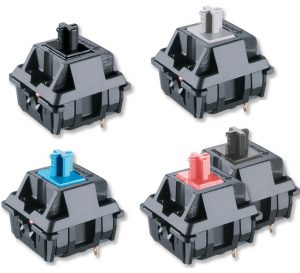Why Picking the Right Membrane Switch Is Essential for Your Item Style
Why Picking the Right Membrane Switch Is Essential for Your Item Style
Blog Article
Understanding the Capability of Membrane Layer Changes for Customer Interface Tools
The functionality of membrane changes stands for a significant innovation in customer interface style, incorporating efficiency with visual versatility. These switches operate through a multi-layered framework that translates customer interactions into electric signals, enabling both small layouts and strength against ecological elements. As industries increasingly focus on user experience, recognizing the nuances of membrane layer switch modern technology becomes important. What effects do these developments hold for future applications, and just how might they redefine user communications across various tools?
What Are Membrane Switches?
Membrane layer switches are cutting-edge interface devices that help with individual communication with digital tools. These versatile elements include numerous layers, consisting of a visuals overlay, spacer, and a published circuit layer. The layout enables a seamless combination into different electronic gadgets, improving both the aesthetic and functional elements of individual interfaces.
Membrane switches are frequently utilized in a variety of applications, from household appliances to industrial machinery and clinical tools. Their building and construction generally includes a thin profile, making them an optimal option for small styles. The tactile feedback supplied by these switches can be engineered to meet specific customer preferences, making sure effective communication between the individual and the device.
Toughness is one more significant benefit of membrane layer switches, as they are resistant to dirt, moisture, and chemicals, which boosts their life expectancy sought after environments. In addition, these buttons can be customized in terms of form, dimension, and graphic layout, enabling branding and user-specific features. Overall, membrane layer switches stand for a sensible service for boosting customer experience in digital gadgets, incorporating functionality with visual charm in a reliable way.
Exactly How Membrane Layer Switches Work
Operating on a straightforward concept, membrane switches over make use of a split construction to register individual input successfully. Each switch is composed of numerous layers, consisting of a published circuit layer, a spacer layer, and a top graphic layer, which are created to work with each other effortlessly. When an individual presses the top layer, it presses the spacer layer, bringing the conductive aspects of the circuit layer into contact with each other.
This contact creates a shut circuit, signaling the gadget to execute a certain function. The style permits for numerous arrangements, consisting of tactile comments, which can boost the user experience by giving a physical feeling upon activation. The materials made use of in membrane switches frequently consist of adaptable substratums, such as polyester or polycarbonate, which make sure durability and strength against deterioration.

Key Benefits of Membrane Layer Buttons

Another significant benefit is their compactness. Membrane buttons are thin and light-weight, which allows producers to conserve area in their tools without giving up performance. This feature is specifically helpful in applications where weight and volume are critical factors to consider.
Furthermore, membrane layer switches are immune to dust, dampness, and chemicals, enhancing their resilience. This durability expands their life-span and lowers the need for constant substitutes, resulting in price financial savings with time.
In addition, the tactile feedback given by membrane layer switches can be maximized to boost user communication. They can include functions such as increased switches or audible clicks, enhancing use and individual experience.
Applications Throughout Industries
Interface gadgets using original site membrane switches are common in a wide range of sectors, showcasing their adaptability and performance. Membrane Switch. In the medical market, membrane layer buttons are essential to gadgets such as analysis equipment and client tracking systems, where their sturdiness and convenience of cleansing are important for keeping health standards. In the auto industry, these switches are employed in dashboard controls and infotainment systems, providing a streamlined and modern-day interface for users.
Moreover, the consumer electronics sector benefits from membrane buttons in home appliances and portable gadgets, where small style and easy to use interfaces enhance user experience. Industrial applications also utilize membrane layer changes for control panels in machinery and automation systems, emphasizing their effectiveness and resistance to rough settings.
In the aerospace and protection sectors, membrane layer switches are utilized in cockpit controls and tools, where dependability and performance under extreme conditions are paramount. In addition, the gaming sector significantly integrates membrane buttons in controllers and game devices, adding to an interesting individual experience. In general, the adaptability of membrane switches over enables their widespread usage throughout numerous fields, highlighting their relevance in modern user interface layout.
Future Trends in Membrane Layer Switch Modern Technology

Furthermore, using sophisticated products, such as polycarbonate and polyester movies, is expected to climb, giving enhanced durability and resistance to environmental stress factors. These products contribute to the overall longevity of membrane switches, making them ideal for harsher industrial applications.
Additionally, the incorporation of wise modern technology, consisting of IoT connection, will allow membrane layer switches to connect with various other tools and systems, promoting an extra interactive customer experience. This pattern aligns with the growing need for clever devices across numerous sectors, from health care to Web Site consumer electronics.
Lastly, personalization choices are expected to increase, permitting manufacturers to create bespoke options tailored to specific individual demands and choices. These growths will place membrane buttons as essential parts in the evolution of interface innovation.
Conclusion
Finally, membrane layer switches represent a pivotal improvement in user interface technology, using a dependable and functional remedy for varied electronic applications. Their split building and construction facilitates small design, while attributes such as responsive comments improve customer interaction. The longevity against environmental elements even more solidifies their energy throughout several industries. As improvements in product scientific research and touch picking up innovations proceed, the capability and applicability of membrane layer buttons are anticipated to increase, reinforcing their importance in modern-day digital devices.
Report this page